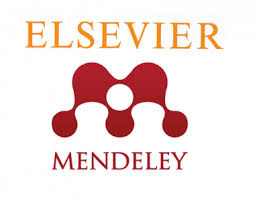INTERNATIONAL JOURNAL OF CREATIVE RESEARCH THOUGHTS - IJCRT (IJCRT.ORG)
International Peer Reviewed & Refereed Journals, Open Access Journal
ISSN Approved Journal No: 2320-2882 | Impact factor: 7.97 | ESTD Year: 2013
Call For Paper - Volume 12 | Issue 7 | Month- July 2024
Scholarly open access journals, Peer-reviewed, and Refereed Journals, Impact factor 7.97 (Calculate by google scholar and Semantic Scholar | AI-Powered Research Tool) , Multidisciplinary, Monthly, Indexing in all major database & Metadata, Citation Generator, Digital Object Identifier(DOI)
Contact Us Click Here
WhatsApp Contact Click Here
Volume 8 | Issue 3 | March-2020
| IJCRT Journal front page | IJCRT Journal Back Page |
Paper Title: INVESTIGATING RETRIEVAL OF IMAGES USING LOW LEVEL FEATURES
Author Name(s): More Praveen, Dr. Pankaj Kawadkar
Published Paper ID: - IJCRTN020021
Register Paper ID - 219065
Publisher Journal Name: IJPUBLICATION, IJCRT
DOI Member ID: 10.6084/m9.doi.one.IJCRTN020021 and DOI :
Author Country : Indian Author, India, - , -, - , | Research Area: Science and Technology Published Paper URL: http://ijcrt.org/viewfull.php?&p_id=IJCRTN020021 Published Paper PDF: download.php?file=IJCRTN020021 Published Paper PDF: http://www.ijcrt.org/papers/IJCRTN020021.pdf
Your Paper Publication Details:
Title: INVESTIGATING RETRIEVAL OF IMAGES USING LOW LEVEL FEATURES
DOI (Digital Object Identifier) :
Pubished in Volume: 8 | Issue: 3 | Year: March 2020
Publisher Name : IJCRT | www.ijcrt.org | ISSN : 2320-2882
Subject Area: Science and Technology
Author type: Indian Author
Pubished in Volume: 8
Issue: 3
Pages: 192-198
Year: March 2020
Downloads: 507
E-ISSN Number: 2320-2882
Abstract
The combination of these content-based features is needed for better retrieval of image according to the application. The main test of CBIR framework is to decide the specific/surmised matching image of database to the query image. Over the most recent two decades, CBIR frameworks have been enhanced a lot. In any case, there still stay a few issues which have not been addressed agreeably. Most importantly issue is of semantic gap, which exist between low level feature portrayal of images and the genuine visual view of the image. The similarity between two images (spoken to by their feature esteems) will characterize by a similarity measure. Choice of similarity metrics will have coordinate effect on the execution of content-based image retrieval. A CBIR using multistage retrieval strategy is proposed here to deal with these issues. Low level features of an image can be local and global. In this paper the A computer system having Pentium IV, 2.8 GHz processor and 1 GB RAM is used for conducting experiments. This system has been actualized in MATLAB.
Licence: creative commons attribution 4.0
License
Keywords
Images, retrieval, low, level, CBIR
License
Paper Title: A FRAMEWORK FOR ETL DESIGN EVALUATION BASED ON QUALITY FRAMEWORK
Author Name(s): Madduru Samba Sivudu, Dr. Pankaj Kawadkar
Published Paper ID: - IJCRTN020020
Register Paper ID - 219652
Publisher Journal Name: IJPUBLICATION, IJCRT
DOI Member ID: 10.6084/m9.doi.one.IJCRTN020020 and DOI :
Author Country : Indian Author, India, - , -, - , | Research Area: Science and Technology Published Paper URL: http://ijcrt.org/viewfull.php?&p_id=IJCRTN020020 Published Paper PDF: download.php?file=IJCRTN020020 Published Paper PDF: http://www.ijcrt.org/papers/IJCRTN020020.pdf
Your Paper Publication Details:
Title: A FRAMEWORK FOR ETL DESIGN EVALUATION BASED ON QUALITY FRAMEWORK
DOI (Digital Object Identifier) :
Pubished in Volume: 8 | Issue: 3 | Year: March 2020
Publisher Name : IJCRT | www.ijcrt.org | ISSN : 2320-2882
Subject Area: Science and Technology
Author type: Indian Author
Pubished in Volume: 8
Issue: 3
Pages: 181-191
Year: March 2020
Downloads: 471
E-ISSN Number: 2320-2882
Abstract
Using Extraction, transformation, and loading ETL activities, an association might collect information from both inside and outside sources, change it, and afterward populate an information stockroom with the consequences of these cycles. As a model for business processes, the Business Process Modelling and Notation has been given. ETL procedures are expressed on a conceptual level. In this study, an alternative strategy is investigated. ETL is specified using relational algebra (RA), which has been enhanced with update procedures. A data warehousing architecture's Extraction, Transformation, and Loading (ETL) process is critical. ETL operations are often time-consuming and sophisticated. The design step is very crucial (though sometimes overlooked) in ETL development since it has an influence on the future phases, namely implementation. As well as execution When ETL quality is addressed throughout the design process, it is possible to take steps that will have a good and long-term impact.Process efficiency is improved at a cheap cost. Briand et alframework .'s (theoretical validation) was used. Internal metrics that we believe are linked to process efficiency are established in detail (framework for system artefacts). We also present empirical support for this relationship, as well as an interpretation of the data.the efficiency indicators that have a greater influence. ETL design quality has been addressed before, but this is the first time that measurements across ETL models have been used to anticipate the performance of these models.
Licence: creative commons attribution 4.0
License
Keywords
Data Integration Performance,ETL processes, Empirical Validation, Design Quality, Theoretical Validation.
License
Paper Title: A DEEP LEARNING SYSTEM POWERED BY IOT TO EARLY RECOGNISE AND CLASSIFY CERVICAL CELLS
Author Name(s): Anju Lata Agnihotri, Dr. Jitendra Sheethlani
Published Paper ID: - IJCRTN020018
Register Paper ID - 219642
Publisher Journal Name: IJPUBLICATION, IJCRT
DOI Member ID: 10.6084/m9.doi.one.IJCRTN020018 and DOI :
Author Country : Indian Author, India, - , -, - , | Research Area: Science and Technology Published Paper URL: http://ijcrt.org/viewfull.php?&p_id=IJCRTN020018 Published Paper PDF: download.php?file=IJCRTN020018 Published Paper PDF: http://www.ijcrt.org/papers/IJCRTN020018.pdf
Your Paper Publication Details:
Title: A DEEP LEARNING SYSTEM POWERED BY IOT TO EARLY RECOGNISE AND CLASSIFY CERVICAL CELLS
DOI (Digital Object Identifier) :
Pubished in Volume: 8 | Issue: 3 | Year: March 2020
Publisher Name : IJCRT | www.ijcrt.org | ISSN : 2320-2882
Subject Area: Science and Technology
Author type: Indian Author
Pubished in Volume: 8
Issue: 3
Pages: 160-170
Year: March 2020
Downloads: 493
E-ISSN Number: 2320-2882
Abstract
Cervical disease is one of the quickest developing worldwide medical issues and drivingreason for mortality among women of agricultural nations. Mechanized Pap smear cell acknowledgment and classification in beginning phase of cell improvement is urgent for effective sickness determination and quick therapy. In this article, we proposed a clever Internet of HealthcareThings (IoHT) driven profound learning system for recognition and classification of cervical malignant growth in Pap smear pictures utilizing idea of move learning. Following exchange learning, Convolutional NeuralNetwork (CNN) was joined with different traditional AI procedures like K nearest neighbour, Guileless Bayes, calculated relapse, irregular woodland and backing vector machines. In the proposed system, highlight extraction from cervical pictures is performed utilizing pre-prepared CNN models like InceptionV3, VGG19, Squeeze Net furthermore, ResNet50, which are taken care of into thick and swelled layer for typical and abnormal cervical cells classification. The exhibition of the proposed IoHT systems is assessed utilizing standard Pap smear Helve dataset. The proposed approach was approved by breaking down accuracy, review, F1-score, preparing testing time and backing boundaries. The results reasoned that CNN pre-prepared model ResNet50 accomplished the higher classification pace of 97.89% with the contribution of irregular backwoods classifier for effective and dependable infection discovery and classification. The least preparation time and testing time expected to prepare model were 0.032 s and 0.006 s, separately.
Licence: creative commons attribution 4.0
License
Keywords
Pre-trained, Transfer,IoHT, Regression, Classification.
License
Paper Title: QUALITY-OF-SERVICE WITH LOAD BALANCING IN CLOUD COMPUTING
Author Name(s): Imtiyaz Khan, Dr. Pankaj Kawadkar
Published Paper ID: - IJCRTN020017
Register Paper ID - 219648
Publisher Journal Name: IJPUBLICATION, IJCRT
DOI Member ID: 10.6084/m9.doi.one.IJCRTN020017 and DOI :
Author Country : Indian Author, India, - , -, - , | Research Area: Science and Technology Published Paper URL: http://ijcrt.org/viewfull.php?&p_id=IJCRTN020017 Published Paper PDF: download.php?file=IJCRTN020017 Published Paper PDF: http://www.ijcrt.org/papers/IJCRTN020017.pdf
Your Paper Publication Details:
Title: QUALITY-OF-SERVICE WITH LOAD BALANCING IN CLOUD COMPUTING
DOI (Digital Object Identifier) :
Pubished in Volume: 8 | Issue: 3 | Year: March 2020
Publisher Name : IJCRT | www.ijcrt.org | ISSN : 2320-2882
Subject Area: Science and Technology
Author type: Indian Author
Pubished in Volume: 8
Issue: 3
Pages: 148-159
Year: March 2020
Downloads: 502
E-ISSN Number: 2320-2882
Abstract
Because of the added complexity of dealing with quality of service (QoS) needs in a highly virtualized dynamic environment, the cloud computing paradigm brings new problems to performance management of both applications and infrastructure. This is especially true.This is true for either SaaS apps in public clouds that are being launched into production with strict security requirements, or for SaaS applications in private clouds that are being deployed into production with strict security SLAs or important internal applications developed on private cloud PaaS/IaaS infrastructures.As a result, performance testing activities are critical for lowering the risks associated with software development. Managing significant changes in user and transaction workloads or deploying to production. Enterprise apps have been migrating to the cloud in large numbers in recent years. Managing QoS, the difficulty of assigning resources to the application in order to provide a service level in terms of performance, availability, and dependability, is one of the difficulties faced by cloud applications. QoS modelling approaches applicable for cloud systems are summarised in this paper, which aims to help researchers in this area. We also discuss and characterise their early use in different cloud QoS management decision-making concerns.
Licence: creative commons attribution 4.0
License
Keywords
virtualization, infrastructure, Service Level Agreement, Quality of Service.
License
Paper Title: MODELING AND VALIDATION OF CMS MODELS AND INTERMEDIARY LANGUAGES
Author Name(s): Bharat Singh Senwal, Dr. Jitendra Sheethlani
Published Paper ID: - IJCRTN020015
Register Paper ID - 216441
Publisher Journal Name: IJPUBLICATION, IJCRT
DOI Member ID: 10.6084/m9.doi.one.IJCRTN020015 and DOI :
Author Country : Indian Author, India, - , -, - , | Research Area: Science and Technology Published Paper URL: http://ijcrt.org/viewfull.php?&p_id=IJCRTN020015 Published Paper PDF: download.php?file=IJCRTN020015 Published Paper PDF: http://www.ijcrt.org/papers/IJCRTN020015.pdf
Your Paper Publication Details:
Title: MODELING AND VALIDATION OF CMS MODELS AND INTERMEDIARY LANGUAGES
DOI (Digital Object Identifier) :
Pubished in Volume: 8 | Issue: 3 | Year: March 2020
Publisher Name : IJCRT | www.ijcrt.org | ISSN : 2320-2882
Subject Area: Science and Technology
Author type: Indian Author
Pubished in Volume: 8
Issue: 3
Pages: 127-137
Year: March 2020
Downloads: 531
E-ISSN Number: 2320-2882
Abstract
Content Management Systems (CMS) have emerged as a basic course of action for web planning measures lately. CMS can be portrayed as an instrument for the principal age, change, and the leaders of web data. A CMS emits an impression of being useful since it gives a standardized stage to web advancement with a lot of limits that license clients (or webpage business visionaries) to manage the website without the necessity for master data.The main aim of this study is Web Application Development And CMS Model-Driven Transformations. We will select to accomplish the examination work of our own by using the strategy for Action Research. The proposed strategy relies upon two CMS-coordinated vernaculars, CMS-ML and CMS-IL, which are composed at different levels of consultation. CMS-ML will in everyday model at a huge level; on the other hand, CMS-IL utilize low-level thoughts (despite the language's shortfall of expressness to a single CMS structure) to give a typical viewpoint on the development of more raised level vernaculars, similar to CMS-ML.
Licence: creative commons attribution 4.0
License
Keywords
CMS,Modeling, Model,Language, Application, web,etc.
License
Paper Title: ASSESSMENT OF EVALUATION CRITERIA FOR THE SOFTWARE PROCESS IMPROVEMENT METHODS
Author Name(s): Puppala Krupa Sagar, Dr. Pankaj Kawadkar
Published Paper ID: - IJCRTN020013
Register Paper ID - 216440
Publisher Journal Name: IJPUBLICATION, IJCRT
DOI Member ID: 10.6084/m9.doi.one.IJCRTN020013 and DOI :
Author Country : Indian Author, India, - , -, - , | Research Area: Science and Technology Published Paper URL: http://ijcrt.org/viewfull.php?&p_id=IJCRTN020013 Published Paper PDF: download.php?file=IJCRTN020013 Published Paper PDF: http://www.ijcrt.org/papers/IJCRTN020013.pdf
Your Paper Publication Details:
Title: ASSESSMENT OF EVALUATION CRITERIA FOR THE SOFTWARE PROCESS IMPROVEMENT METHODS
DOI (Digital Object Identifier) :
Pubished in Volume: 8 | Issue: 3 | Year: March 2020
Publisher Name : IJCRT | www.ijcrt.org | ISSN : 2320-2882
Subject Area: Science and Technology
Author type: Indian Author
Pubished in Volume: 8
Issue: 3
Pages: 106-117
Year: March 2020
Downloads: 525
E-ISSN Number: 2320-2882
Abstract
Software Process Improvement (SPI) focuses on upgrading the time, cost and nature of designing and the board practices in programming affiliations. In any case, the highlight in this cycle is on options decision; however, the methodology falls short of providing an appropriate foundation to aid SPI technique advancement. The rule motivation behind this work is to establish the framework for SPI by discussing the piece of programming, the changes in programming advancement systems and programming improvement process models, and the quality turn of events. The main aim of this study is to assess the Evaluation Criteria For The Software Process Improvement Methods. In addition, SPI experiences are analyzed. In the planning investigation cycle, the detail of the strategy was made on the explanation out of the general necessities set for the undertaking, the appraisal of existing improvement moves close and current prerequisites. The affiliations related with this stage conveyed two or three basics they had set for the improvement method.
Licence: creative commons attribution 4.0
License
Keywords
Software, Improvement, SPI, Model, Etc.
License
Paper Title: SEMANTIC AND SYNTAX OF WEB UTILIZINGHEX PROGRAMME
Author Name(s): G Priyanka Jeeva Karunya, Dr. Pankaj Kawadkar
Published Paper ID: - IJCRTN020011
Register Paper ID - 216445
Publisher Journal Name: IJPUBLICATION, IJCRT
DOI Member ID: 10.6084/m9.doi.one.IJCRTN020011 and DOI :
Author Country : Indian Author, India, - , -, - , | Research Area: Science and Technology Published Paper URL: http://ijcrt.org/viewfull.php?&p_id=IJCRTN020011 Published Paper PDF: download.php?file=IJCRTN020011 Published Paper PDF: http://www.ijcrt.org/papers/IJCRTN020011.pdf
Your Paper Publication Details:
Title: SEMANTIC AND SYNTAX OF WEB UTILIZINGHEX PROGRAMME
DOI (Digital Object Identifier) :
Pubished in Volume: 8 | Issue: 3 | Year: March 2020
Publisher Name : IJCRT | www.ijcrt.org | ISSN : 2320-2882
Subject Area: Science and Technology
Author type: Indian Author
Pubished in Volume: 8
Issue: 3
Pages: 82-94
Year: March 2020
Downloads: 526
E-ISSN Number: 2320-2882
Abstract
Licence: creative commons attribution 4.0
License
Keywords
Semantic Web, Hex Programme,ASP etc.
License
Paper Title: EVALUATING FAMINE AND HUNGER IN THE WORKS OF BHABHANI BHATTACHARYA WITH SPECIAL REFERENCE TO HE WHO RIDES A TIGER AND SO MANY HUNGERS
Author Name(s): Amina Dilshad Mohammed, Dr. Babina Bohra
Published Paper ID: - IJCRTN020009
Register Paper ID - 216449
Publisher Journal Name: IJPUBLICATION, IJCRT
DOI Member ID: 10.6084/m9.doi.one.IJCRTN020009 and DOI :
Author Country : Indian Author, India, - , -, - , | Research Area: Science and Technology Published Paper URL: http://ijcrt.org/viewfull.php?&p_id=IJCRTN020009 Published Paper PDF: download.php?file=IJCRTN020009 Published Paper PDF: http://www.ijcrt.org/papers/IJCRTN020009.pdf
Your Paper Publication Details:
Title: EVALUATING FAMINE AND HUNGER IN THE WORKS OF BHABHANI BHATTACHARYA WITH SPECIAL REFERENCE TO HE WHO RIDES A TIGER AND SO MANY HUNGERS
DOI (Digital Object Identifier) :
Pubished in Volume: 8 | Issue: 3 | Year: March 2020
Publisher Name : IJCRT | www.ijcrt.org | ISSN : 2320-2882
Subject Area: Science and Technology
Author type: Indian Author
Pubished in Volume: 8
Issue: 3
Pages: 60-70
Year: March 2020
Downloads: 588
E-ISSN Number: 2320-2882
Abstract
Bhabani Bhattacharya is unquestionably one of the four most recognised writers of the Indian English novel, along with Mulk Raj Anand, R.K Narayan, and Raja Rao. The Indian liberation fight and hunger have been popular themes among a lot of Indian writers in English, and Bhabani Bhattacharya stands out as one novelist who has portrayed this issue in such a distinctive way. Bhattacharya was a socially conscious novelist who had little faith in aimless art or 'art for the sake of art.' 'So Many Hungers!' and 'He Who Rides a Tiger' are the two key novels to be explored in this topic. As "weavers sold their looms to dealers from major cities who combed the countryside for deals," these books depict how poor people endure during times of hunger. 'So Many Hungers!' is structured on two intertwined plot strands: the storey of Rahoul, the protagonist, and his family, and the sorrowful storey of Kajoli, the peasant girl, and her family. Many writers, researchers, daily newspaper offices, and the Indian government contributed to the study's publications and credible sources. The novelist's profound understanding of rural life, as well as the dramatisation of the miseries of hunger and famine, are both present in this storey. The work is also a parody on Hindu orthodoxy, set against the socio-political backdrop of the Bengal famine and the liberation fight before to independence. It also demonstrates that any man who struggles against society is unable to adjust, and hence must eventually reconcile himself to it. This article also finds that, as far as descriptions of the impoverished and destitute are concerned, Bhattacharya is unquestionably unparalleled in the field of Indian English literature, and his true and poetic representation of poverty and hunger is noteworthy.
Licence: creative commons attribution 4.0
License
Keywords
Novel, Hunger, Famine, Bhabani Bhattacharya, Hunger and Casteism, He who rides a Tiger, So Many Hungers! Etc.
License
Paper Title: EVALUATION OF MULTI-DATA CENTER CONSISTENCY (MDCC) PROTOCOL AND PREDICTIVE LATENCY-AWARE NETWORKED TRANSACTIONS (PLANET) FOR TRANSACTION PROGRAMMING MODEL
Author Name(s): Syeda Farhath Begum, Dr. Pankaj Kawadkar
Published Paper ID: - IJCRTN020007
Register Paper ID - 216437
Publisher Journal Name: IJPUBLICATION, IJCRT
DOI Member ID: 10.6084/m9.doi.one.IJCRTN020007 and DOI :
Author Country : Indian Author, India, - , -, - , | Research Area: Science and Technology Published Paper URL: http://ijcrt.org/viewfull.php?&p_id=IJCRTN020007 Published Paper PDF: download.php?file=IJCRTN020007 Published Paper PDF: http://www.ijcrt.org/papers/IJCRTN020007.pdf
Your Paper Publication Details:
Title: EVALUATION OF MULTI-DATA CENTER CONSISTENCY (MDCC) PROTOCOL AND PREDICTIVE LATENCY-AWARE NETWORKED TRANSACTIONS (PLANET) FOR TRANSACTION PROGRAMMING MODEL
DOI (Digital Object Identifier) :
Pubished in Volume: 8 | Issue: 3 | Year: March 2020
Publisher Name : IJCRT | www.ijcrt.org | ISSN : 2320-2882
Subject Area: Science and Technology
Author type: Indian Author
Pubished in Volume: 8
Issue: 3
Pages: 48-53
Year: March 2020
Downloads: 518
E-ISSN Number: 2320-2882
Abstract
Managing the transactions progressively circulated processing system isn't simple, as it has heterogeneously arranged PCs to take care of a solitary issue. In the event that a transaction keeps running over some extraordinary sites, it might submit at a few sites and may disappointment at another site, prompting a conflicting transaction. In database systems, one of the principle methodologies, to keep up the consistency of shared data during the simultaneous execution of various solicitations (from different clients), is the transactional management procedure. Database systems bunch various peruse and compose tasks into (nuclear) transactions that follow ACID (Atomicity, Consistency, Isolation, Durability) properties. PLANET is a transaction programming model deliberation and can be utilized with various information models, question dialects and consistency ensures, like JDBC being utilized with SQL or XQuery, contingent upon database bolster. MDCC protocol in Scala, on top of a distributed key/esteem store, which utilized Oracle BDB Java Edition as a steady storage motor we conveyed the system across five geologically different data focuses on Amazon EC2: US West (N. California), US East (Virginia), EU (Ireland), Asia Pacific (Singapore), and Asia Pacific (Tokyo). We can say that this proposition originally portrayed another transaction submit protocol, MDCC, for disseminated data-base systems. MDCC, or Multi-Data Center Consistency, is another submits protocol that gives versatile ACID transactions in disseminated database systems. By misusing these two properties and adjusting the summed up Paxos protocol for transactions, MDCC upholds appropriated transactions for adaptable database systems. PLANET gives organized criticism about exchanges, and uncovered more prominent perceivability of transaction state so applications and engineers can all the more likely adjust to capricious conditions
Licence: creative commons attribution 4.0
License
Keywords
Multi-Data Center Consistency, managing, transaction, database management system, etc
License
Paper Title: AN EVALUATION ON CLUSTER BASED HYBRID INTRUSION DETECTION SYSTEM WITH FAULT TOLERANCE
Author Name(s): Kamal Kishore Prasad, Dr. Rajendra Singh Kushwar
Published Paper ID: - IJCRTN020003
Register Paper ID - 216444
Publisher Journal Name: IJPUBLICATION, IJCRT
DOI Member ID: 10.6084/m9.doi.one.IJCRTN020003 and DOI :
Author Country : Indian Author, India, - , -, - , | Research Area: Science and Technology Published Paper URL: http://ijcrt.org/viewfull.php?&p_id=IJCRTN020003 Published Paper PDF: download.php?file=IJCRTN020003 Published Paper PDF: http://www.ijcrt.org/papers/IJCRTN020003.pdf
Your Paper Publication Details:
Title: AN EVALUATION ON CLUSTER BASED HYBRID INTRUSION DETECTION SYSTEM WITH FAULT TOLERANCE
DOI (Digital Object Identifier) :
Pubished in Volume: 8 | Issue: 3 | Year: March 2020
Publisher Name : IJCRT | www.ijcrt.org | ISSN : 2320-2882
Subject Area: Science and Technology
Author type: Indian Author
Pubished in Volume: 8
Issue: 3
Pages: 12-19
Year: March 2020
Downloads: 511
E-ISSN Number: 2320-2882
Abstract
In the distributed intrusion detection method, the agent can travel from one node to an alternate node within a network and perform the errand concurrently and autonomously in various cycles over the distributed system. The proposed architecture is made out of three layers: Layer 1 consists of host agent and net agent. Layer 2 has the mobile agent and Layer 3 contains the decision making and replication agents. The layers in the system are arranged into network and mobile agent layers, and they send messages to the system administrator utilizing a decision making agent. They are further arranged into replication agent and profile database. The decision making agent triggers the 6 messages, for example, REQUEST, REPLY, CANCEL and ACK because of the execution of applications. The replication agent generates the control messages including CALL and REPORT because of the execution of the intrusion detection procedure.
Licence: creative commons attribution 4.0
License
Keywords
Distributed, Intrusion, Detection, Agent, Layer, Replication.
License
July 2024
Volume 12 | Issue 7
Last Date :
31-Jul-2024
Submit Manuscript Online Impact Factor: 7.97 Review Results : Within 02-03 Days Paper Publication : Within 02-03 Days

ISSN: 2320-2882 Impact Factor: 7.97 and ISSN APPROVED Journal Starting Year (ESTD) : 2013

ISSN: 2320-2882 Impact Factor: 7.97 and ISSN APPROVED Journal Starting Year (ESTD) : 2013

CONFERENCE PROPOSAL CONFERENCE PROCEEDINGS






































































